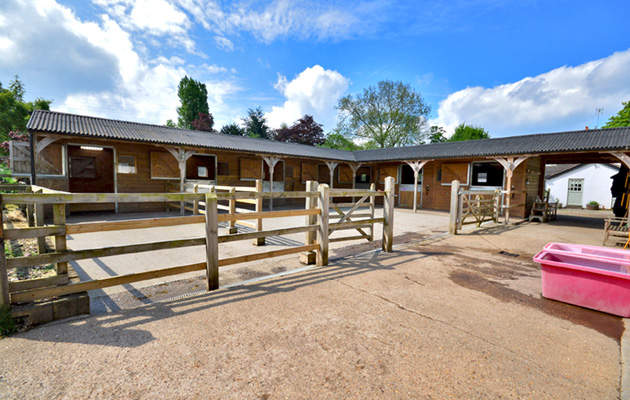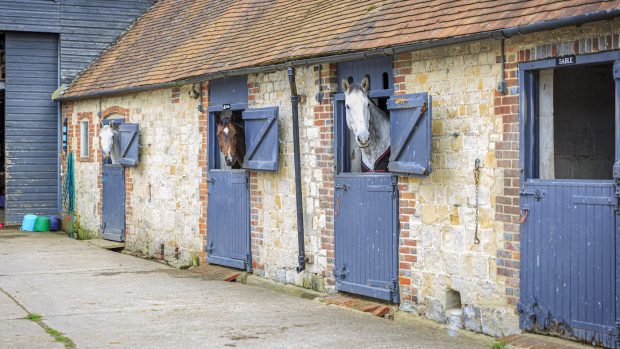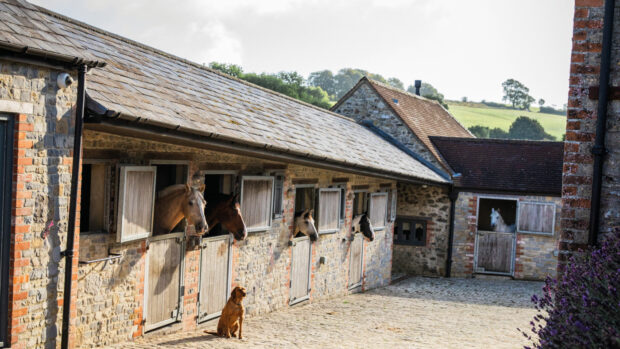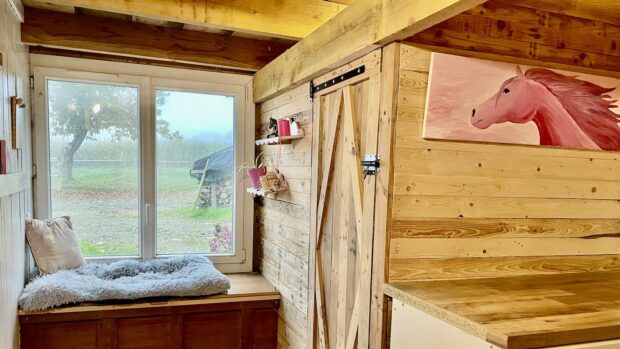Have you taken on a new equestrian property? Or are you looking to give your stables a bit of a face lift? We spoke to the experts to get their advice on where to start…
Converting an existing building
“If you are lucky enough to have existing outbuildings, it will prove more economical to convert these into stables, rather than build from scratch,” advises Lorelei Tomkins, marketing manager and PR for Monarch Equestrian.
“However, you will still need planning permission, even if you aren’t changing the exterior. Some points to consider when converting an existing barn include: the concrete floor, does this need relaying? Is the drainage appropriate? Is there enough height? Will you need to house a tack room, wash bay or feed room within the same building? Is there adequate light and ventilation?
“Employing the help of a professional, whether builder or stable expert is recommended, to ensure that you have considered all aspects involved with the conversion,” says Lorelei.
Make it airy
Ventilation is key to keeping our horses healthy explains Neil Hancox, of Hancox Equestrian, so evaluating your ventilation and whether you could improve it can be a good place to start.
“Ventilation is the most crucial thing to consider before anything else,” advises Neil. “Your building needs to be a dry and airy environment. It should have a vented ridge to allow warm and stale air to escape. Our Hancox Barn includes a ventilated soffit to assist with air movement as well as a raised, ventilated roof ridge. Air needs to be able to enter a building, circulate and then exit. I always recommend front and back steel-framed windows to help with this, as not only do they offer more opportunities for air to flow in, they give the horse natural light and a choice of views which can help reduce stable vices.
“Buildings for horses need to balance preventing drafts with good ventilation. The cladding you choose is also important, especially if you’re modifying an existing building. Some cladding commonly used for buildings housing cattle is not well suited to horses.”
Smaller changes with a big impact
Renovating your yard might not always call for a total overhaul, sometimes, smaller changes like sprucing up stable doors, can provide a refreshed look and feel.
Jacob Consterdine, a former sales manager of a stabling company, explains: “The biggest thing I would say on this is that it is probably undervalued is how big of a difference new stable doors and windows can make to a building. Just these simple aspects can change the feel of the building.”
Alice Roberts, former marketing manager of Cheval Liberte UK, agrees: “Replacing features such as windows and doors is a cost-effective way of adding class and security to your barn. Teamed with a lick of paint, you can transform any building into functioning stabling fit for your horses, with both standard and made-to-measure services on offer.
“Plexi-Glass windows, shutters and stable doors are a great way of providing quality ventilation into a stable block, improving conditions for the accommodated horses and improving their overall health, as well as improving the aesthetics of the building.”
Check the roof
Jacob also highlights the importance of a good roof: “Obviously every job is different. Some customers come to us with roofs falling in on stables that have been up 50 years, others want replacement anti chew tin around the doors and everything in between.
“The majority of the time, if a new roof is put on and new stable doors are fitted then it adds at least another 10 years onto the building.”
Lighten up
When it comes to creating light and airy stables, James Scott, managing director of Scotts of Thrapston, shares his advice: “There are some things that people tend to make do with in their stables, the most common is the light levels in loose boxes. Scotts do not recommend light panels in the roof, as these increase heat and are quite costly to fit. Instead we recommend a rear top door or glazed rear top door. These increase light and air flow, as well as keeping the horse entertained when in the box with another view to look at. They are relatively easy to fit.
“Scotts would also recommend internal linings, as it will add to the structural integrity of timber boxes. Budget stable suppliers normally only have the bottom 1.2m lined, this is not ideal as dust collects in the gap making them a poorer environment, harder to clean and gives the horse more edges to chew.”
Get stuck in
If your yard is structurally sound but you’d like to give it a new look, then it may be time to roll up your sleeves and get stuck in yourself.
A fresh coat of paint can give your stables a whole new look. Dark greens and browns are popular choices to blend in with surroundings, but some opt for brighter designs too. It’s worth checking with your local planning office first if you’re dreaming of a colourful change, particularly if you’re in a conservation area or area of outstanding natural beauty.
Pinterest is a great source of inspiration for everything from traditional timber designs to multi-coloured Shetland-sized stable doors.
- To stay up to date with all the breaking news throughout the Paralympics, Burghley, HOYS and more, subscribe to the Horse & Hound website
You might also be interested in:

Designing your dream stable yard — expert tips on where to start

How to get planning permission for stables

Fancy keeping your horses at home? Useful tips for building a stable yard

Subscribe to Horse & Hound magazine today – and enjoy unlimited website access all year round



